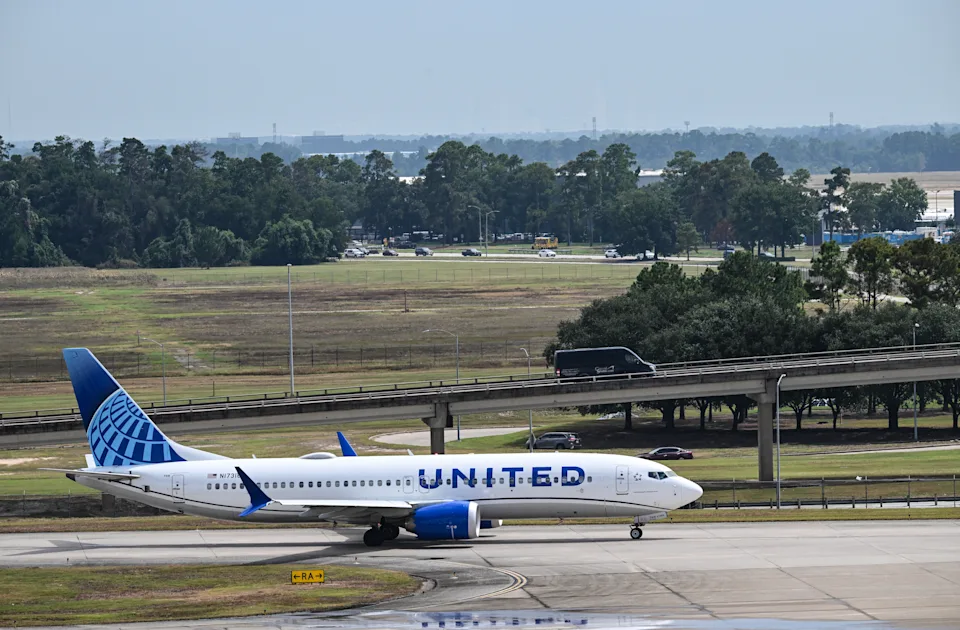Americans making over $100,000 a year are boosting the US economy, with industries ranging from travel and the auto industry to packaged foods and even dollar stores feeling the shift.
“Our consumer is a high-end consumer … They’re financially strong. They’ve got the means. They’ve got the interest to travel,” Delta Air Lines (DAL) CEO Ed Bastian told Yahoo Finance last week. Its premium business, like Comfort Plus and Delta One cabins, saw revenue increase 9% year over year in the quarter.
United Airlines (UAL) CEO Scott Kirby said the company has a higher share of demand among its loyalty customers, who have the means to travel, on an earnings call with investors.
“There are people that … in many cases, do have the income to continue traveling,” Kirby said.
Attempting to shrug off slowdown fears, Kirby added, “If demand … bleeds off on the lower end when there’s economic stress, there’s more seats available on United Airlines for those brand-loyal customers … it makes [the airlines] resilient.” Its premium revenue grew 6% last quarter.
In its latest Beige Book report released on Wednesday, the Federal Reserve found that “spending by higher-income individuals on luxury travel and accommodation was reportedly strong” among its business contacts.
The Beige Book added, “Several reports highlighted that lower- and middle-income households continued to seek discounts and promotions in the face of rising prices and elevated economic uncertainty.”
The ‘primary driver’ of a spending split
In September, spending by households in the top third of the income distribution rose by 2.6% over last year, according to data from the Bank of America Institute published earlier this month. For the lowest third of earners, spending rose a more modest 0.6%.
A survey conducted by JPMorgan pointed to more of the same in the near term. Analyst Matthew Boss found that higher-income consumers, who feel better about the trajectory of the US economy, plan to increase spending on nonessential goods such as clothing over the next 12 months, compared to middle- and lower-income consumers, who plan to pull back.
David Tinsley, senior economist for the Bank of America Institute, told Yahoo Finance the wage picture is playing a large role in the widening gap between spending habits of higher- and lower-income consumers.
Wages for the highest earners rose 4% over the prior year in September; for the lowest earners, wages rose just 1.4%, failing to keep pace with inflation. “And that divergence has widened really over the last six months or so,” Tinsley said. “So that’s, I think, the primary driver.”
And as the S&P 500 (^GSPC) moves higher — it’s up more than 12% from a year ago — Tinsley said there is a “close relationship” between what the index is doing and how much higher-income consumers’ spending outpaces other cohorts.
In the auto industry, the average transaction price of a new car rose to a record high above $50,000 last month, Kelley Blue Book said in a new report. KBB’s Erin Keating said this surge has been “driven by wealthier households who have access to capital, good loan rates, and are propping up the higher end of the market.”
High earners splurged on luxury vehicles in September, like the Cadillac Escalade or Ford’s F-150 pickup truck.
In the aisles of grocery and convenience stores, these dynamics are also weighing on results.
PepsiCo (PEP) chairman and CEO Ramon Laguarta told investors on the company’s earnings call this month that the lower-income cohorts are “very stretched” as the cost of living has increased.
“That will create the need for affordability, … value, and … cost-consciousness also for the foreseeable future,” Laguarta said. In response, the company said new pack sizes were in the works.
Even budget retailers are seeing a benefit, as some consumers shift their spending patterns in an apparent effort to keep their vacation plans intact and make changes in other parts of the budget.
At Dollar Tree (DLTR), the company’s multiprice strategy has both responded to a stretched core consumer and appealed to higher-income shoppers “trading down.”
Executive Brent Beebe said at the company’s investor day on Wednesday that it plans to shift around price points within its food business “because of how much pressure the lower-end customer is under,” with more customers looking for food options at lower price points.
At the same time, Dollar Tree expanded its multiprice strategy with price points like $1.35, $3, and $5 in response to more higher-income shoppers.
“When households, especially higher-income households, shop our stores, they drive higher baskets because multiprice is especially relevant to them,” CEO Michael Creedon added. “Multiprice … is highly accretive to our financial and operating performance overall.”

